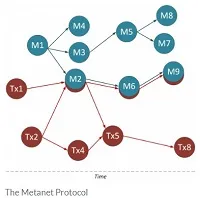
In the age of endless scrolling, viral trends, and meme culture, a new term has emerged to describe the effects of excessive internet consumption: Brainrot. This slang term, popularized by Gen Z and internet communities, refers to the feeling of mental fatigue, confusion, or even a sense of absurdity caused by consuming too much online content, particularly memes, TikTok videos, or other fast-paced, low-context media.
Brainrot isn’t just a humorous way to describe feeling "fried" after hours of scrolling—it’s a commentary on how the internet is reshaping our attention spans, humor, and even thought processes. Let’s dive deeper into what Brainrot means, why it’s trending, and how it reflects broader cultural shifts.
The Origins of Brainrot:
The term "Brainrot" likely originated from online forums and social media platforms like Twitter, Reddit, and TikTok. It’s often used humorously to describe the mental state of someone who has consumed so much internet content that their thoughts are dominated by memes, inside jokes, or nonsensical trends. For example, someone might say, "I’ve been watching too many TikTok skits—I’ve got full-on Brainrot."
Brainrot is closely tied to the concept of "chronically online" behavior, where individuals spend so much time on the internet that their worldview and communication style become heavily influenced by digital culture. This can lead to a unique form of humor and language that feels alien to those who aren’t as plugged in.
Why is Brainrot Trending?
The Rise of Short-Form Content: Platforms like TikTok, Instagram Reels, and YouTube Shorts have revolutionized how we consume media. The constant barrage of quick, entertaining clips can overwhelm the brain, leading to the sensation of Brainrot.
Meme Culture: Memes are a universal language on the internet, but their absurdity and rapid evolution can leave people feeling mentally drained. Brainrot is often associated with the overconsumption of memes.
Relatability: Many people find the term relatable, as it captures the feeling of being mentally "fried" after hours of scrolling. It’s a humorous way to acknowledge the impact of digital overload.
Gen Z Humor: Brainrot is a hallmark of Gen Z’s unique sense of humor, which often embraces absurdity, irony, and self-deprecation. It’s a way to laugh at the chaos of the internet age.
The Cultural Impact of Brainrot:
Brainrot isn’t just a joke—it’s a reflection of how the internet is changing our brains. Studies have shown that excessive consumption of short-form content can reduce attention spans and make it harder to focus on longer, more meaningful tasks. Brainrot is a lighthearted way to describe this phenomenon, but it also raises important questions about the long-term effects of digital culture.
For content creators, Brainrot represents both a challenge and an opportunity. On one hand, it’s harder than ever to capture and hold an audience’s attention. On the other hand, embracing the absurdity and humor of Brainrot can help creators connect with younger, internet-savvy audiences.
How to Avoid Brainrot?
While Brainrot is often used humorously, it’s important to be mindful of how much time you spend online. Here are a few tips to avoid mental fatigue:
Set Screen Time Limits: Use apps or settings to monitor and reduce your daily screen time.
Engage in Offline Activities: Balance your online consumption with hobbies, exercise, or face-to-face interactions.
Curate Your Feed: Follow accounts that inspire or educate you, rather than just entertain.







